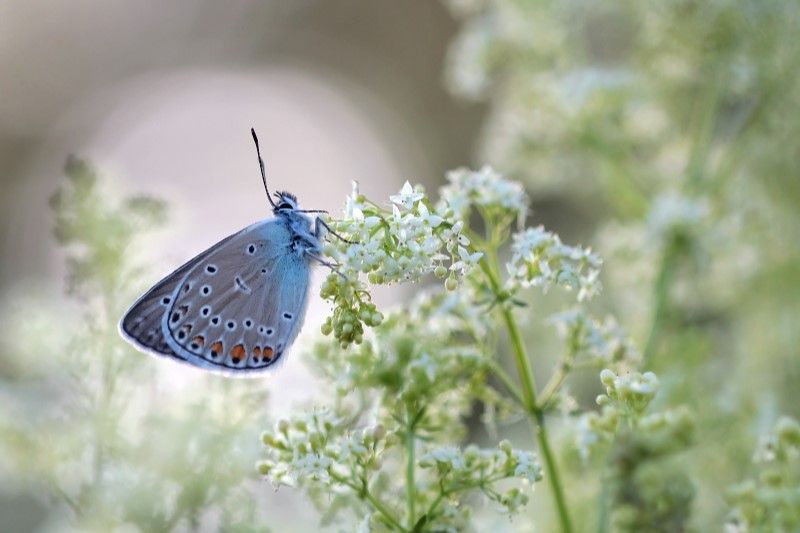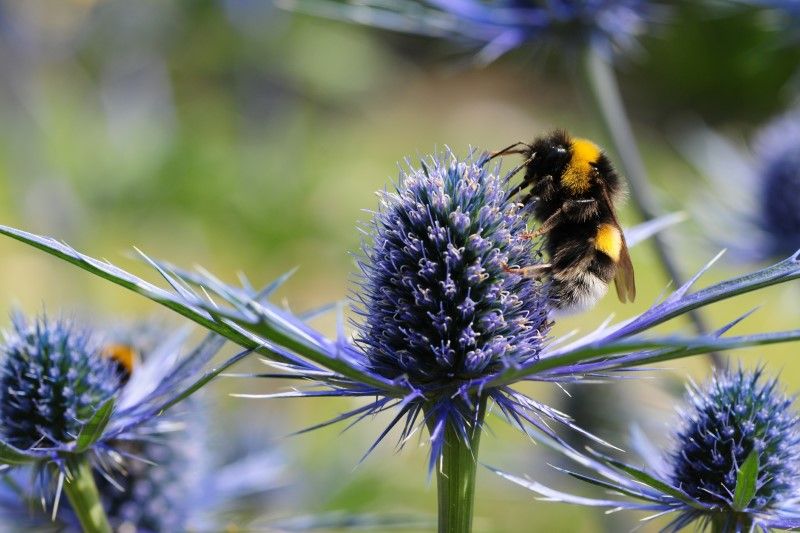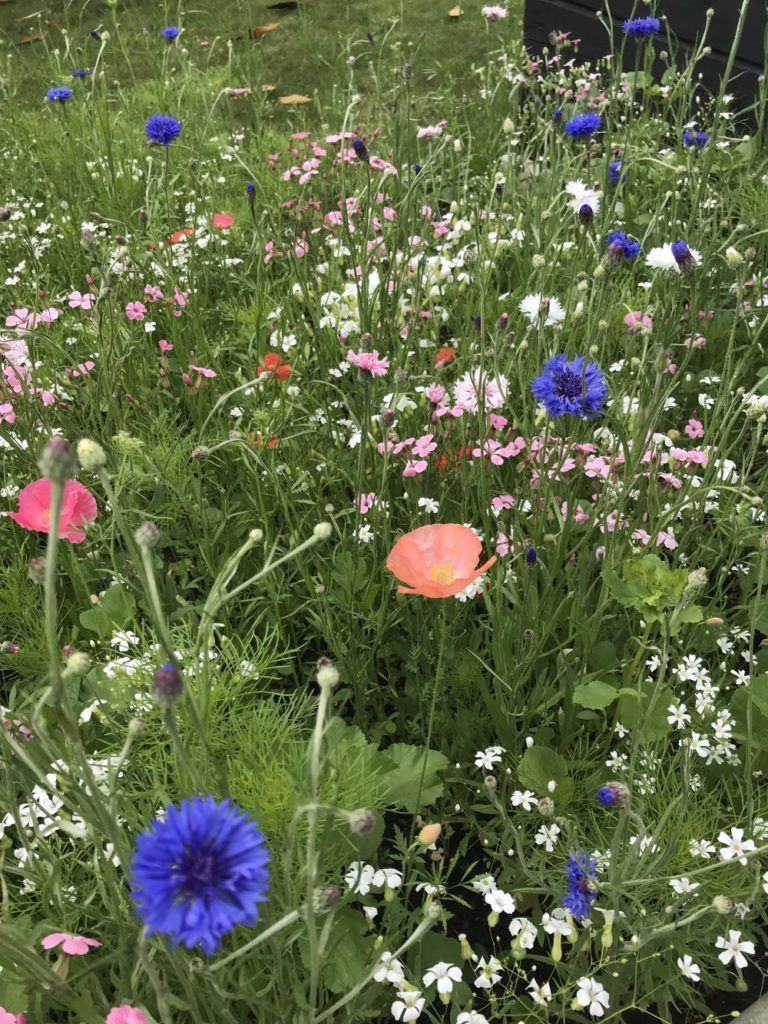How to grow wildflowers

It’s estimated that only 3% of the wildflower meadows that spotted the countryside in the 1930s remain today. This is a devastating loss of habitat not only for the thousands of insect species that make this such a biodiverse environment, but also for the small mammals, birds, amphibians, and bats that depend on them.
Whilst we can’t recreate true wildflower meadows, there are various ways that we can welcome wildflowers into our gardens, depending on the time of year, the type of soil, and the amount of space available.
Many wildflowers prefer nutrient-deficient soils and can’t compete with grass, nettles, buttercups and dandelions that dominate on richer soils. Anything you can do to reduce nutrient retention will help, like increasing drainage, inverting topsoil, and adding gravel.
For tiny terraces and very small gardens
Sow seeds in a pot or planter
• Choose a pot with drainage holes and place a layer of rocks and stones at the base.
• Mix together equal parts peat-free compost and regular old garden soil to lower nutrient richness.
• Sprinkle wildflower seeds on top of the soil and cover with a one-centimetre layer of the soil mix.
• Place the pot in a sunny spot and water regularly – but don’t overdo it!
For small, medium or large gardens with grass:
Create your own mini meadow
• Choose a patch of land ideally in sun or partial sun.
• To reduce soil fertility, you may need to remove existing grass and strip away the first 5-10 centimetres of topsoil to expose the bare ground.
• Dig the soil over and walk or roll it down, then rake to create an even seed bed.
• Sow the seeds evenly and keep the soil moist.
• Wait a couple of months from seed to full bloom.

A few notes and best practices
• It’s common to sow seeds in the autumn when the ground is warm and so that the seeds have time to take root over the winter. However, it’s just as good to sow your seeds in March or April, after which point you can expect to see flowers in about 2 months.
• You’ll probably want to use a mix of both annuals and perennials so that you get the gratification of seeing flowers bloom in your first year (these will be the annuals), but so that you also get to see other flowers come back year after year (these will be the perennials, which take up to two years to flourish).
• Yellow rattle is an excellent plant to add to the mix, as it acts as a parasite against dominant grasses, weakening them by taking their water and nutrients and leaving room for the less boisterous wildflowers to flourish.
Managing your wildflowers
Follow a yearly cycle of management
• After the last flowers have bloomed in the summer, let the seed heads ripen and fall, which should happen between the end of July and the beginning of September.
• Earlier cuts favour annuals, later cuts are more beneficial to perennials, so mix it up a bit.
• Cut everything back hard to about 2.5cm. Collect all the dry clippings after a few days to allow seeds to disperse and compost them.
• Clearing the clippings keeps down soil fertility and prevents aggressive grasses from choking out the wildflowers.
• If you have a large meadow, leave some edges completely uncut as a safe space for bugs and other animals to use as refuge over winter. You can alternate these edges every year.
• We recommend hand-cutting or scything your meadow instead of mechanically strimming it if possible. This is to avoid killing or injuring wildlife including hedgehogs, slow worms, bumblebee nests and more.
Show us your creation!
Take a photo of your wildflowers and submit it below, or post on social media, tag PTES, and inspire others to do the same!


